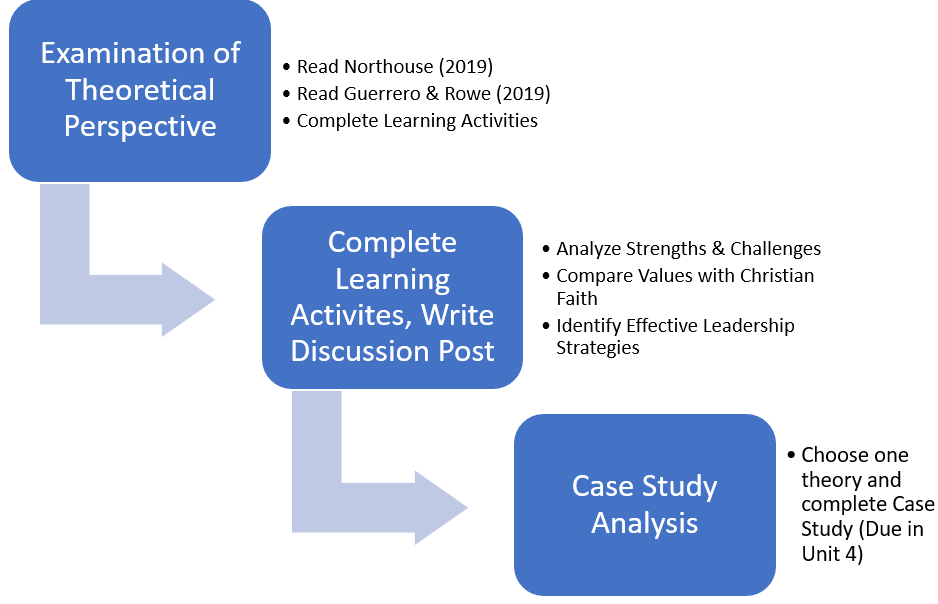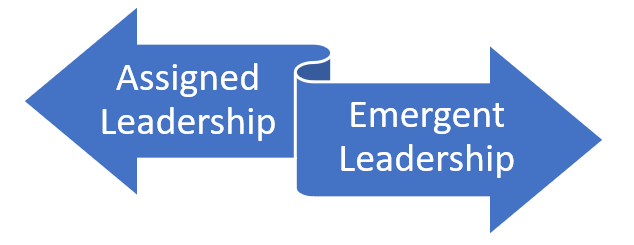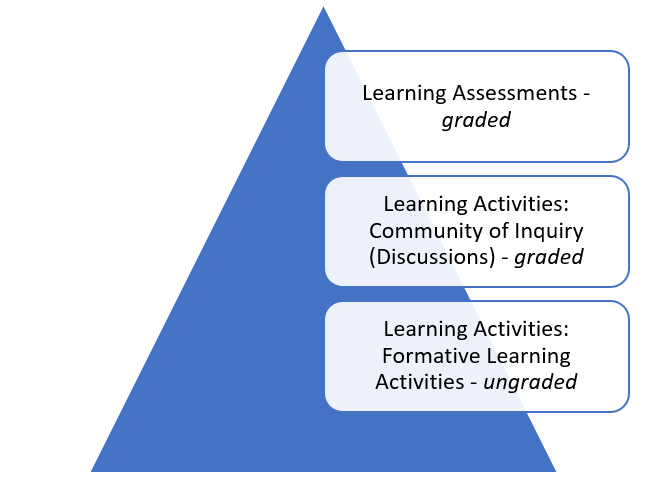Unit 1 Defining Leadership

two people hiking on a snow covered mountain range
Image by Saikat Ghosh from Pexels
Overview
Welcome to LDRS 500 Leadership Foundations. In this course, we will analyze philosophical and theoretical approaches to leadership, including servant leadership, transformational leadership, and authentic leadership. We will dive into the scholarly literature about leadership, consider the thought leaders who influence leadership in our professional contexts, and consider how we can apply leadership concepts and values in our own sphere of influence as leaders.
Definitions of leadership since the early 1900s reflect evolving understandings of people, process, power and society. While the complexity of leadership is undeniable, our conceptualization of it in the Master of Arts in Leadership program aims to be holistic.
In our study of leadership, we will examine a wide range of scholarly writing. This scholarly inquiry into leadership will be accompanied by a review of case studies, and synthesis of this learning with our own experiences. Our studies will also provide an opportunity to consider exemplars from the social, economic, political and virtual public spheres. We also draw on the leadership example of Jesus as the ultimate example of a servant leader. Anyone who has had the experience of being a leader likely agrees with Brown (2019) who argues that, “Regardless of the complexity of the concepts, studying leadership is way easier than leading” (p. 4).
According to Brown, (2019) all leaders share the common experience of vulnerability – an experience that Brown (2018) argues is central not just to the experience of leadership, but also to life. Attending to this vulnerability is an important part of our growth as leaders, according to Brown (2019).
“Adaptability to change, hard conversations, feedback ,problem solving, ethical decision making, recognition, resilience, and all of the other skills that underpin daring leadership are born of vulnerability” (Brown, 2019, p. 43). What we need, Brown (2019) argues, are “braver leaders and more courageous cultures” (p. 6).
We will become scholars of leadership and engage in our own personal leadership development throughout the Master of Arts in Leadership. In this course, we will focus our reading, thinking, and writing on three leadership theories: servant leadership, transformational leadership, and authentic leadership. We will also study transformational servant leadership – a theoretical perspective that combines servant and transformational leadership theories.
Definitions of leadership since the early 1900s reflect evolving understandings of people, process, power and society. In the Master of Arts in Leadership program, you will engage in higher ordered thinking and analysis. The complexity of leadership is undeniable and the study of leadership includes theories, skills, and application. As portrayed in the graphic below, the MA Lead program is based on Transformational Servant Leadership, grounded in values and ethics. We will focus our studies on nine leadership competencies: Visioning & Strategic Thinking, Adaptability & Change, Results, Team Leadership, People Development, Innovation, Service Quality & Orientation, Relationships & Collaboration, Planning & Organizing, Visioning & Strategic Thinking, and Adaptability & Change.
As we progress through each unit, we will explore one or more of these leadership competencies. (See pdf for full descriptions.)
Your Birkman assessment and consultation helped you identify three competencies to work on during the program. As you begin this program, we suggest you choose one of your strengths and two other opportunities for growth. As an applied program, we will constantly encourage you to relate concepts to practice. This focus on praxis will help you leverage your learning throughout the program and engage in authentic personal leadership development to prepare you for the impact you want to make in your team, organization, or community. As we begin this course, take a moment to consider the type of leader you want to be in five years. Let’s get started!
Learning Objectives
At the end of this unit students will be able to:
- Construct a personal definition of leadership.
- Differentiate between assigned and emergent leaders.
- Compare management and leadership.
- Identify the role leaders play in directing, shaping, and sustaining inclusive teams, organizations, or communities.
Course Topics
In this unit, we will explore the following topics:
- Definitions and Theory of Leadership
- Assigned and Emergent Leaders
- Leadership and Management
Unit Resources
Here are the resources you will need to complete this unit.
- Brown (2018). Dare to lead.
- Northouse, P. G. (2019). Leadership: Theory and practice.
Other online resources will be provided in the unit.
1.1 Definitions and Theory of Leadership
“Leadership is a process whereby an individual influences a group of individual to achieve a common goal.” (Northouse, 2019, p. 5).
Northouse’s (2019) definition captures four key elements of leadership. “(a) Leadership is a process, (b) leadership involves influence, (c) leadership occurs in groups, and (d) leadership involves common goals” (p. 5).
This definition provides a framework for our studies on leadership. We will think together about the process of leadership – how leaders cast a vision, as well as the influence leaders have to inspire others to achieve that vision. In your own context, you have likely engaged with or observed leaders who excel in inspiring others to achieve more than they thought possible. In this course, we will study how and why that happens, examining theoretical perspectives on leadership. We will consider both the academic scholarship about leadership, and the practical application of that scholarship.
What is a Theory or Theoretical Perspective?
In graduate education, we engage in scholarly reading, thinking, and writing focused on continual review and analysis of research conducted by scholars, as well as research we conduct ourselves. One key component of scholarship is the development and analysis of theoretical frameworks. Theories are developed by researchers to explain phenomenon, systems, experiences, etc. Theories are a way of explaining what, why, or how something happens.
Plano Clark and Creswell (2015) define theory as something that “explains and predicts the probable relationship among different concepts (variables)” (p. 490).
Theories are developed by researchers, who offer an explanation that other researchers then test in additional research studies. Through this process, theories are proven or disproven. Scholars who study leadership have developed theories to explain the process and experience of leaders and followers.
Perhaps the most common theories you have heard about leadership focus on whether leaders are born or made. One theory is that someone is a “born leader.” In this widely held theory, one is either born a leader, or not. Contrasting that, others argue that “leaders are made, not born.” From this perspective, a wide range of people have the potential to become leaders through personal growth, intentional development, or mentoring.
From an academic perspective, theories about leadership seek to explain how leadership differs based on the underlying values and beliefs about the leader, the follower, and the reason for the work or goal of the team, organization, or community. These theories provide models for our thinking about leadership.
In Dare to Lead: Brave work, tough conversations, whole hearts (one of the texts for this course) Brown (2018) discusses her engagement as a scholar with the process of developing theory. “In my approach, I develop theories based on lived experiences, not existing theories. Only after I capture the participants’ experiences do I try to place my theories in the existing research” (p. 33). This approach, called grounded theory, is one approach to qualitative research, in which researchers collect data first and then develop a theory around that data. In contrast, other researchers (both qualitative and quantitative) begin with the theory, and then research it within a specific situation to determine who that theory works in a real-world situation.
In Leadership: Theory and practice (another text in this course), Northouse (2019) provides an overview of several leadership theories, summarizing and synthesizing the literature published by researchers who have studied leadership throughout decades. Likewise, Rowe and Guerrero (2019) in Cases in leadership, provide a similar overview of leadership theories. These researchers have also provided case studies, which are a way for us to consider how these leadership theories actually work in real-world scenarios.
In this course, we will focus on three leadership theories: servant, transformational, and authentic. (I also encourage you to read about other theories that catch your interest). Each theory we will study incorporates both principles and values, which we will analyze throughout this course. We will also consider each leadership theory in comparison to values demonstrated in the Christian faith.
Theoretical Perspectives on Leadership
Over the next three units, we will examine three leadership theories. In our examination of each leadership theory, we will begin by reviewing the Northouse (2019) and Rowe and Guerroro (2019) texts, as well as other resources. In each of these three units, you will participate in discussions for each leadership theory which will include:
- A definition of the leadership theory.
- Three principles identified in the theory, with examples for each.
- Analysis of potential strengths and challenges of the theory.
- Analysis of how the leadership theory aligns with the Christian faith.
- Discussion of how a leader influences organizational outcomes.
- Pose a question to other learners that emerged as you engaged in your reading, analysis, and writing.
Through this Community of Inquiry, we will engage in collaborative inquiry into these three theoretical perspectives, deepening our shared understanding of these important leadership theories.
These discussions will prepare you for an upcoming assignment due in Unit 5. You will have the choice to complete one of the following:
Assignment: Leadership Theory Case Study, in which you will select one theory and complete a case study analysis.
Assignment: Leadership Theory Paper, in which you will select one theory to research and analyze more deeply. (This can be the same theory, or a different one, but will need to be original writing).
As we analyze these three theories, we will follow the process outlined above, and visually displayed below:

Infographic of process
1.2 Assigned and Emergent Leaders
While we often think of leaders as those in an official position of leadership (for example: a vice president of a company, a surgeon leading a medical team, a pastor of a church, or a principal of an elementary school), leadership involves more than simply a position or job. Indeed, those who lead or influence others often are not in positions of leadership. Consider, for example, the friend who always suggests a new book to read, event to attend, or place to go. That friend is a leader. Consider Brene Brown (2019), author of the Daring to Lead text we will read in this class. Brown is a faculty member at University of Houston, but her influence extends well beyond the students she teaches. Brown, who has authored multiple best-selling books, has become a thought leader about trust, vulnerability, belonging, and leadership.
Within our organizations and communities, there are people who emerge as leaders: others trust them, are inspired by them, or listen to them. These people often (but not always) transition into formal leadership positions.
Likewise, some people in positions of leadership do not have influential leadership. They may be able to coerce or force others to follow them, but they have not gained the trust of those they lead. Frequently, over time these people transition out of formal leadership positions.

graphic of arrows pointing to “Assigned Leadership” and “Emergent Leadership”
1.3 Leadership and Management
Leaders direct, shape, and sustain teams, organizations, and communities. They set the vision (or lead others in the process), create teams, shape the journey to achieve the vision, and inspire and equip others to achieve more than they imagined possible. Leaders play an important role in all our organizations, including government, schools, healthcare, industry, education, places of worship, non-profits, commerce, communities, families, and the playground.
In this course, you will be challenged to reflect deeply about the role of leaders, the type of leader you want to be, and the theory of leadership that aligns most closely with your experiences or aspirations for leadership.
Before we dive into the three leadership theories, we begin here with a discussion of the differences between management and leadership. Leadership and management share many similarities, such as influence, collaboration, and meeting goals (Northouse, 2019). However, they also differ in significant ways. Whereas management focuses more on planning, budgeting, human resource allocation, and organizing the operations of an organization, leadership focuses more on casting a vision, maximizing staff development, and inspiring others to achieve organizational goals (Northouse, 2019).
As you engage in the learning activities for this week, consider Northouse’s (2019) discussion of leadership and management – and how you see both elements reflected in your own organization.
Introduction to Course Learning Activities
In this course, you will engage in learning experiences that build on each other. These learning experiences are designed to ensure you move forward in the process of achieving the course learning outcomes. Learning experiences include Learning Activities and Learning
Assessments:
Learning Activities
In these activities, you will be introduced to new concepts, often through reading scholarly texts. You will also reflect, analyze and apply your new learning, often through Reflective Journals and engagement in the Community of Inquiry (discussions).
There are two categories of Learning Activities:
-
Formative Learning Activities (ungraded) include activities such as reading, viewing short videos online, and completing personal assessments related to leadership. These activities provide you with a foundation of learning and resources for your Graded Learning Activities and Assignments.
FAR Centre Students: You will complete these activities each week prior to your Learning Lab meeting time (FAR Centres) and/or prior to completion of Graded Learning Activities (online and FAR Centres).
-
Graded Learning Activities (Graded) include activities such as Discussion Posts (online) or Reflective Journals (FAR Centres). You will also be asked to create visual models of your learning, complete interviews, and conduct a coaching conversation.
FAR Centre Students: You will bring your Reflective Journal to your Learning Lab for review by your facilitator. In class activities and discussions will allow you an opportunity to dive deeper into your thinking about the topics you have written about in your journal. Other learning activities will be completed each week and posted in Moodle for your instructor to review and assess.
Online Students: Discussions and other Graded Learning Activities will be posted in the Discussion Forum for your instructor to review and assess.
Formative Learning Activities (ungraded)
Activity 1.1: Readings
📘: Read Northouse (2019) - Chapter 1-
Introduction
📘: Read Brown (2018) - Introduction & Part 1-
Rumbling with Vulnerability
⌛: 2-3 hours
Activity 1.2: Community of Inquiry (Follow the Leader)
🔍: Identify an opinion leader you admire and follow that person on at least one social media platform (Twitter, Facebook, discussion, LinkedIn, Instagram, etc.). The person you choose to follow could be from your area of expertise, but that is not necessary. Write a discussion post, including the following:
-
Identify the leader, the platforms on which you followed them, and
an outline of their ideas and their impact. Please include a link to the
leader’s social media account(s).
-
What are one or two significant ideas your chosen leader espouses
and what do you think about these concepts in relation to your work as a
leader?
-
What advice would you give the leader on how to better motivate
followers or use the capabilities of the medium to influence people
toward a common goal?
- How do the leader’s values, ethics, or principles align with your own regarding leadership?
Once you have published your own post, respond to one or two of your colleagues’ posts. Identify the role this leader plays in shaping or sustaining a group or organization.
Post your discussion in the Community of Inquiry discussion forum. Respond to two other learners in the discussion forum.
